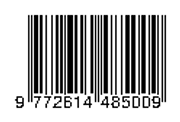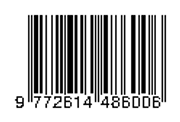Design and Build a Research Information System at National Cyber and Crypto Polythecnic with Recommender System for Thesis Supervisor Based on Text Similarity Metric
DOI:
https://doi.org/10.26905/jeemecs.v8i1.15219Abstract
Politeknik Siber dan Sandi Negara (Poltek SSN) currently does not have an adequate system for managing research proposals. As a university, it must fulfill the Tri Dharma of Higher Education, one of them is research. Therefore, it is necessary to build a proposal for a management information system. Several previous studies have shown that research information systems can be built with several web frameworks. The approach of utilizing web scraping technology can integrate Google Scholar research data into the information system and recommendation services for accompanying lecturers using the Text Similarity Metric method to provide relevant results. In this study, an integrated research information system application will be built with Google Scholar, implementing the Text Similarity Metric method for the recommendation system for accompanying lecturers, and using the CodeIgniter 4 framework. The integration of the system with this lecturer recommendation service will be tested through monitoring lecturer satisfaction related to the research services provided by the system developed. The results obtained in this study are a research system that works in accordance with the business processes at Poltek SSN with the highest accuracy score on the cosine similarity algorithm of 92,95% and user satisfaction test results of 97,76%.
Downloads
References
[1] I. Chudzaifah, A. N. Hikmah, and A. Pramudiani, “Tridharma Perguruan Tinggi: Sinergitas Akademisi dan Masyarakat dalam Membangun Peradaban,” Al-Khidmah J. Pengabdi. dan Pendampingan Masy., vol. 1, no. 1, pp. 79–93, 2021.
[2] R. Agustino, Y. B. Widodo, A. Wiyatno, and M. I. Saputro, “Sistem Informasi Penelitian dan Pengabdian Masyarakat di Universitas Mohammad Husni Thamrin: Sistem Informasi LPPM, Sistem Database LPPM, Rancang Bangun LPPM,” J. Jaring SainTek, vol. 2, no. 1, pp. 1–12, 2020.
[3] M. Asfi and N. Fitrianingsih, “Implementasi Algoritma Naive Bayes Classifier sebagai Sistem Rekomendasi Pembimbing Skripsi,” InfoTekJar J. Nas. Inform. dan Teknol. Jar, vol. 5, no. 1, pp. 44–50, 2020.
[4] A. Rahmatulloh and R. Gunawan, “Web scraping with HTML DOM method for data collection of scientific articles from Google Scholar,” Indones. J. Inf. Syst., vol. 2, no. 2, pp. 95–104, 2020.
[5] A. F. Putri, G. Manik, F. Nabila, and N. Chamidah, “Implementasi Scraping Google Scholar Menggunakan HTML DOM Untuk Pengumpulan Data Artikel Dosen UPN Veteran Jakarta Berbasis Web,” in Prosiding Seminar Nasional Mahasiswa Bidang Ilmu Komputer Dan Aplikasinya, 2021, vol. 2, no. 1, pp. 668–678.
[6] H. Steck, L. Baltrunas, E. Elahi, D. Liang, Y. Raimond, and J. Basilico, “Deep learning for recommender systems: A Netflix case study,” AI Mag., vol. 42, no. 3, pp. 7–18, 2021.
[7] D. D. Prasetya, A. P. Wibawa, and T. Hirashima, “The performance of text similarity algorithms,” Int. J. Adv. Intell. Informatics, vol. 4, no. 1, pp. 63–69, 2018.
[8] A. Azhari, E. Buulolo, and N. Sialalhi, “Sistem Rekomendasi Dosen Pendamping Skripsi Berbasis Text Rank menggunakan Metode Cosine Similarity,” Pelita Inform. Inf. dan Inform., vol. 10, no. 3, pp. 119–122, 2022.
[9] A. W. Qurashi, V. Holmes, and A. P. Johnson, “Document processing: Methods for semantic text similarity analysis,” in 2020 international conference on INnovations in Intelligent SysTems and Applications (INISTA), 2020, pp. 1–6.
[10] R. Singh and S. Singh, “Text similarity measures in news articles by vector space model using NLP,” J. Inst. Eng. Ser. B, vol. 102, pp. 329–338, 2021.
[11] M. Alfano, A. E. Fard, J. A. Carter, P. Clutton, and C. Klein, “Technologically scaffolded atypical cognition: The case of YouTube’s recommender system,” Synthese, vol. 199, pp. 835–858, 2021.
[12] E. P. Primawanti and H. Ali, “Pengaruh Teknologi Informasi, Sistem Informasi Berbasis Web Dan Knowledge Management Terhadap Kinerja Karyawan (Literature Review Executive Support Sistem (Ess) for Business),” J. Ekon. Manaj. Sist. Inf., vol. 3, no. 3, pp. 267–285, 2022.
[13] N. F. Fauziah and E. Retnoningsih, “Sistem Informasi Penelitian dan Pengabdian kepada Masyarakat Berbasis Web,” Inf. Manag. Educ. Prof. J. Inf. Manag., vol. 4, no. 2, pp. 183–192, 2020.
[14] A. Musrifah, “Rancangan Sistem Informasi Penelitian Dan Pengabdian Kepada Masyarakat Di Fakultas Teknik Universitas Suyakancana,” INFOTECH J., vol. 8, no. 1, pp. 5–12, 2022.
[15] M. Ridwan, A. M. Suhar, B. Ulum, and F. Muhammad, “Pentingnya penerapan literature review pada penelitian ilmiah,” J. Masohi, vol. 2, no. 1, pp. 42–51, 2021.
Downloads
Published
Issue
Section
License
Copyright (c) 2025 JEEMECS (Journal of Electrical Engineering, Mechatronic and Computer Science)

This work is licensed under a Creative Commons Attribution-NonCommercial-ShareAlike 4.0 International License.
Our ethic statements are based on COPE’s Best Practice Guidelines for Journal Editors.
Publication decisions
The editor is responsible for deciding which of the articles submitted to the journal should be published.
The editor may be guided by the policies of the journal's editorial board and constrained by such legal requirements as shall then be in force regarding libel, copyright infringement and plagiarism. The editor may confer with other editors or reviewers in making this decision.
Fair play
An editor at any time evaluate manuscripts for their intellectual content without regard to race, gender, sexual orientation, religious belief, ethnic origin, citizenship, or political philosophy of the authors.
Confidentiality
The editor and any editorial staff must not disclose any information about a submitted manuscript to anyone other than the corresponding author, reviewers, potential reviewers, other editorial advisers, and the publisher, as appropriate.
Disclosure and conflicts of interest
Unpublished materials disclosed in a submitted manuscript must not be used in an editor's own research without the express written consent of the author.
Duties of Reviewers
Contribution to Editorial Decisions
Peer review assists the editor in making editorial decisions and through the editorial communications with the author may also assist the author in improving the paper.
Promptness
Any selected referee who feels unqualified to review the research reported in a manuscript or knows that its prompt review will be impossible should notify the editor and excuse himself from the review process.
Confidentiality
Any manuscripts received for review must be treated as confidential documents. They must not be shown to or discussed with others except as authorized by the editor.
Standards of Objectivity
Reviews should be conducted objectively. Personal criticism of the author is inappropriate. Referees should express their views clearly with supporting arguments.
Acknowledgement of Sources
Reviewers should identify relevant published work that has not been cited by the authors. Any statement that an observation, derivation, or argument had been previously reported should be accompanied by the relevant citation. A reviewer should also call to the editor's attention any substantial similarity or overlap between the manuscript under consideration and any other published paper of which they have personal knowledge.
Disclosure and Conflict of Interest
Privileged information or ideas obtained through peer review must be kept confidential and not used for personal advantage. Reviewers should not consider manuscripts in which they have conflicts of interest resulting from competitive, collaborative, or other relationships or connections with any of the authors, companies, or institutions connected to the papers.
Duties of Authors
Reporting standards
Authors of reports of original research should present an accurate account of the work performed as well as an objective discussion of its significance. Underlying data should be represented accurately in the paper. A paper should contain sufficient detail and references to permit others to replicate the work. Fraudulent or knowingly inaccurate statements constitute unethical behavior and are unacceptable.
Originality and Plagiarism
The authors should ensure that they have written entirely original works, and if the authors have used the work and/or words of others that this has been appropriately cited or quoted.
Multiple, Redundant or Concurrent Publication
An author should not in general publish manuscripts describing essentially the same research in more than one journal or primary publication. Submitting the same manuscript to more than one journal concurrently constitutes unethical publishing behaviour and is unacceptable.
Acknowledgement of Sources
Proper acknowledgment of the work of others must always be given. Authors should cite publications that have been influential in determining the nature of the reported work.
Authorship of the Paper
Authorship should be limited to those who have made a significant contribution to the conception, design, execution, or interpretation of the reported study. All those who have made significant contributions should be listed as co-authors. Where there are others who have participated in certain substantive aspects of the research project, they should be acknowledged or listed as contributors.
The corresponding author should ensure that all appropriate co-authors and no inappropriate co-authors are included on the paper, and that all co-authors have seen and approved the final version of the paper and have agreed to its submission for publication.
Disclosure and Conflicts of Interest
All authors should disclose in their manuscript any financial or other substantive conflict of interest that might be construed to influence the results or interpretation of their manuscript. All sources of financial support for the project should be disclosed.
Fundamental errors in published works
When an author discovers a significant error or inaccuracy in his/her own published work, it is the author’s obligation to promptly notify the journal editor or publisher and cooperate with the editor to retract or correct the paper.










